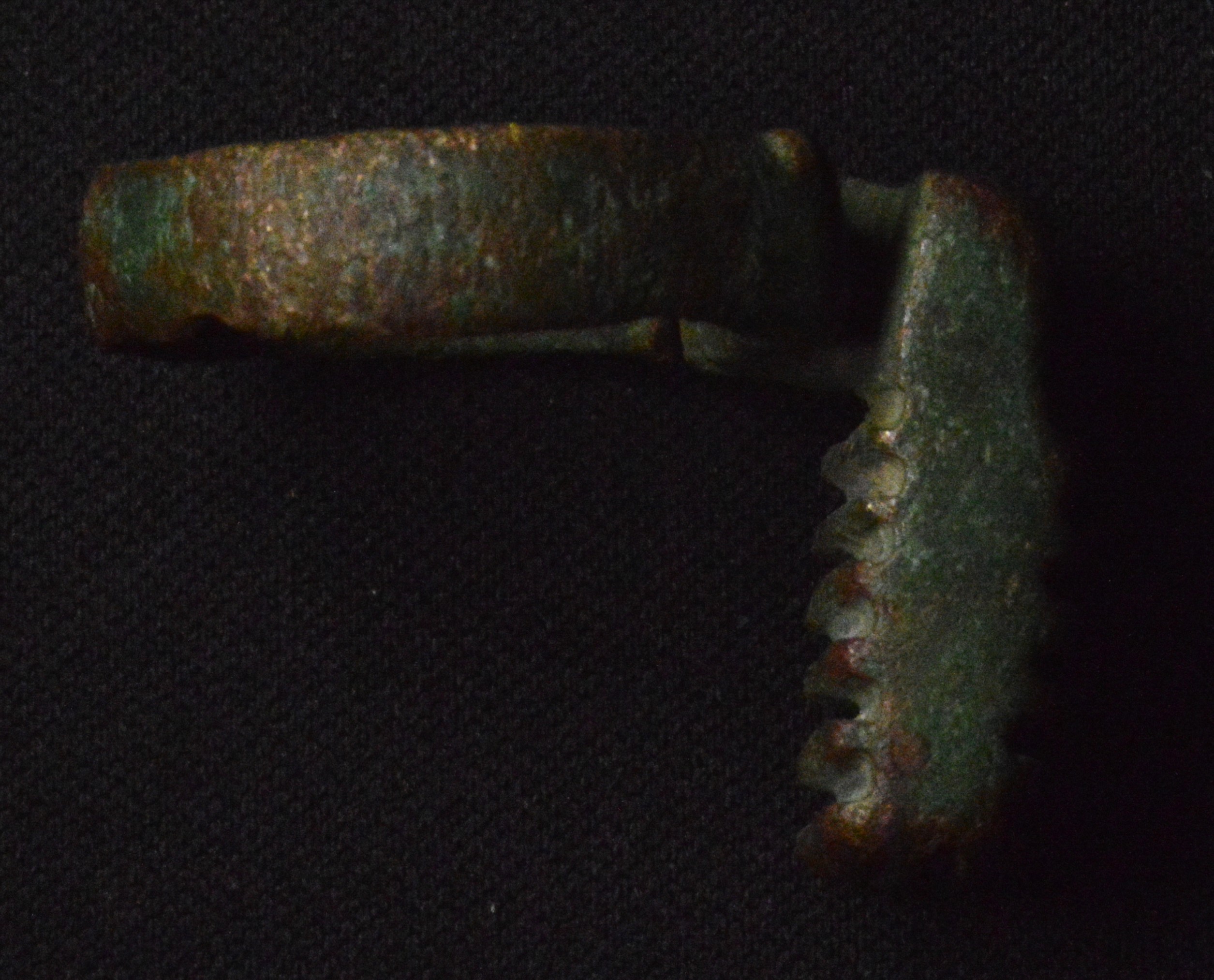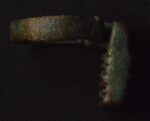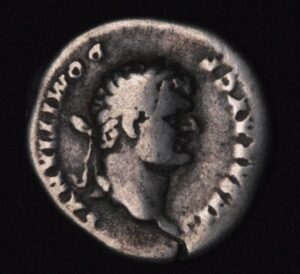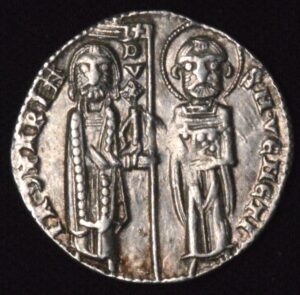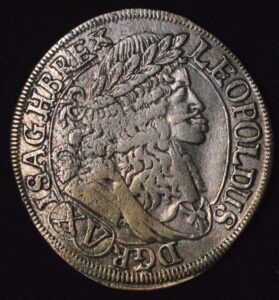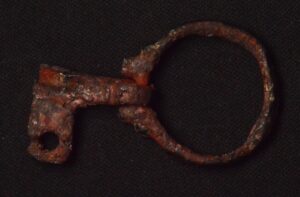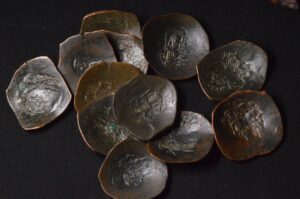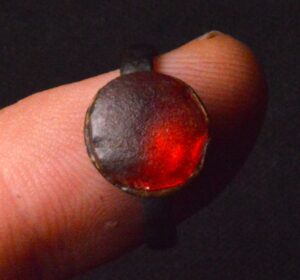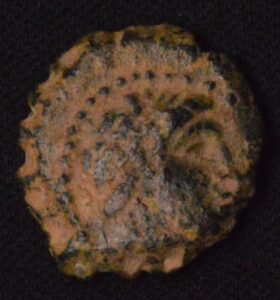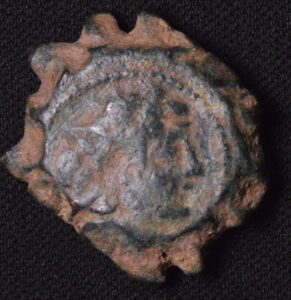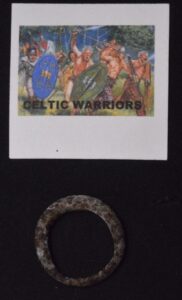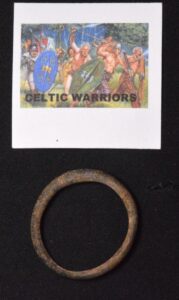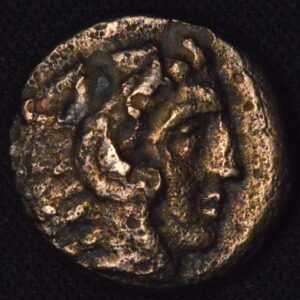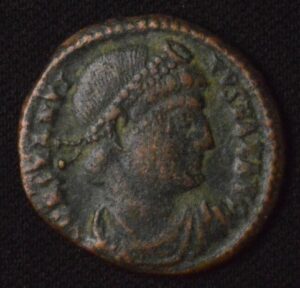Description
An ancient Roman key ring is a remarkable artifact that served both a practical and symbolic purpose in everyday Roman life. These key rings, often made of bronze or iron, were crafted as finger rings with integrated keys, allowing the wearer to always keep a vital key close at hand. Unlike modern key rings that group several keys together, a Roman key ring was literally a key shaped as a ring that fit on a finger, commonly the little finger, and could be used to open items like jewelry boxes, treasure chests, or small caskets of personal possessions. This design addressed the limitations of Roman clothing, which typically did not include pockets, making portable security both convenient and essential.
Roman key rings were finely engineered and often beautifully worked, displaying a variety of shapes and wards that demonstrate their practical function rather than mere decoration. Archaeological finds across the Roman Empire—including major sites like London, Colchester, Pompeii, and Herculaneum—indicate these rings were quite widespread and sometimes even buried with their owners, secure within the locks they were meant to open. Some key rings featured additional artistry, such as engraved inscriptions or decorative elements, and could serve as amulets or status symbols, especially for women after marriage. Their ability to both secure and open became a symbol of trust and responsibility within Roman society.
The ingenious melding of ring and key shows the Romans’ sophistication in both metalworking and security design. Locks and keys were an important part of Roman material culture; these devices protected personal valuables and governed access to wealth, secrecy, and private life. Some Roman key rings even had hidden mechanisms or could function as seals, serving as both utility items and cryptic signifiers of rank or ownership. Their legacy is seen in how locks and keys have evolved over the centuries—Roman examples are instantly recognizable as ancestors of many forms in use right up until modern times.
Despite their ingenious design and practical importance, actual preserved Roman key rings are considered quite rare today, especially in intact condition. Museums such as the British Museum, the Victoria and Albert Museum, and private collections hold examples with detailed provenance, displaying the variety and craftsmanship of these ancient security devices. The surviving artifacts give us insights into daily Roman life and highlight the artistic and inventive capacity of Roman metalworkers.
Ultimately, an ancient Roman key ring stands as a testament to Roman innovation, serving as both a tool and a personal ornament. Its rarity and historical significance make it a fascinating collector’s item, prized not just for its antique value but for its connection to the practical and mystical aspects of Roman society. Whether unearthed from archaeological digs or showcased in museum collections, these rings capture a “wow” factor for their blend of utility, symbolism, and craftsmanship.
An ancient Roman key ring is a remarkable artifact that served both a practical and symbolic purpose in everyday Roman life. These key rings, often made of bronze or iron, were crafted as finger rings with integrated keys, allowing the wearer to always keep a vital key close at hand. Unlike modern key rings that group several keys together, a Roman key ring was literally a key shaped as a ring that fit on a finger, commonly the little finger, and could be used to open items like jewelry boxes, treasure chests, or small caskets of personal possessions. This design addressed the limitations of Roman clothing, which typically did not include pockets, making portable security both convenient and essential.
Roman key rings were finely engineered and often beautifully worked, displaying a variety of shapes and wards that demonstrate their practical function rather than mere decoration. Archaeological finds across the Roman Empire—including major sites like London, Colchester, Pompeii, and Herculaneum—indicate these rings were quite widespread and sometimes even buried with their owners, secure within the locks they were meant to open. Some key rings featured additional artistry, such as engraved inscriptions or decorative elements, and could serve as amulets or status symbols, especially for women after marriage. Their ability to both secure and open became a symbol of trust and responsibility within Roman society.
The ingenious melding of ring and key shows the Romans’ sophistication in both metalworking and security design. Locks and keys were an important part of Roman material culture; these devices protected personal valuables and governed access to wealth, secrecy, and private life. Some Roman key rings even had hidden mechanisms or could function as seals, serving as both utility items and cryptic signifiers of rank or ownership. Their legacy is seen in how locks and keys have evolved over the centuries—Roman examples are instantly recognizable as ancestors of many forms in use right up until modern times.
Despite their ingenious design and practical importance, actual preserved Roman key rings are considered quite rare today, especially in intact condition. Museums such as the British Museum, the Victoria and Albert Museum, and private collections hold examples with detailed provenance, displaying the variety and craftsmanship of these ancient security devices. The surviving artifacts give us insights into daily Roman life and highlight the artistic and inventive capacity of Roman metalworkers.
Ultimately, an ancient Roman key ring stands as a testament to Roman innovation, serving as both a tool and a personal ornament. Its rarity and historical significance make it a fascinating collector’s item, prized not just for its antique value but for its connection to the practical and mystical aspects of Roman society. Whether unearthed from archaeological digs or showcased in museum collections, these rings capture a “wow” factor for their blend of utility, symbolism, and craftsmanship.
An ancient Roman key ring is a remarkable artifact that served both a practical and symbolic purpose in everyday Roman life. These key rings, often made of bronze or iron, were crafted as finger rings with integrated keys, allowing the wearer to always keep a vital key close at hand. Unlike modern key rings that group several keys together, a Roman key ring was literally a key shaped as a ring that fit on a finger, commonly the little finger, and could be used to open items like jewelry boxes, treasure chests, or small caskets of personal possessions. This design addressed the limitations of Roman clothing, which typically did not include pockets, making portable security both convenient and essential.
Roman key rings were finely engineered and often beautifully worked, displaying a variety of shapes and wards that demonstrate their practical function rather than mere decoration. Archaeological finds across the Roman Empire—including major sites like London, Colchester, Pompeii, and Herculaneum—indicate these rings were quite widespread and sometimes even buried with their owners, secure within the locks they were meant to open. Some key rings featured additional artistry, such as engraved inscriptions or decorative elements, and could serve as amulets or status symbols, especially for women after marriage. Their ability to both secure and open became a symbol of trust and responsibility within Roman society.
The ingenious melding of ring and key shows the Romans’ sophistication in both metalworking and security design. Locks and keys were an important part of Roman material culture; these devices protected personal valuables and governed access to wealth, secrecy, and private life. Some Roman key rings even had hidden mechanisms or could function as seals, serving as both utility items and cryptic signifiers of rank or ownership. Their legacy is seen in how locks and keys have evolved over the centuries—Roman examples are instantly recognizable as ancestors of many forms in use right up until modern times.
Despite their ingenious design and practical importance, actual preserved Roman key rings are considered quite rare today, especially in intact condition. Museums such as the British Museum, the Victoria and Albert Museum, and private collections hold examples with detailed provenance, displaying the variety and craftsmanship of these ancient security devices. The surviving artifacts give us insights into daily Roman life and highlight the artistic and inventive capacity of Roman metalworkers.
Ultimately, an ancient Roman key ring stands as a testament to Roman innovation, serving as both a tool and a personal ornament. Its rarity and historical significance make it a fascinating collector’s item, prized not just for its antique value but for its connection to the practical and mystical aspects of Roman society. Whether unearthed from archaeological digs or showcased in museum collections, these rings capture a “wow” factor for their blend of utility, symbolism, and craftsmanship.
CUSTOMER FEEDBACK








Related Products & Newly Released!
-
$70.00




SHIPPING POLICY
Your order is shipped from the United States with USPS tracking within one business day.
14 Day Return Policy
You can return your item back within
14 days of the purchase

Secure payments
Your payments are 100% secure and are processed through Square or PayPal on a protected security network.
SHIPPING POLICY
FREE International and Domestic (United States) shipping. Your order is shipped with USPS tracking 24 hours after you order.
14 Day Return Policy
You can return your item back within
14 days of the purchase

Secure payments
Your payments are 100% secure and are processed through Square or PayPal on a protected security network.
RESOURCES
support
Get Real Deals!
Sign up now to receive our articles for the latest insights and promotions!
RESOURCES
support
Get Fresh Articles!
Signup our newsletter to get update insight or promotions.



